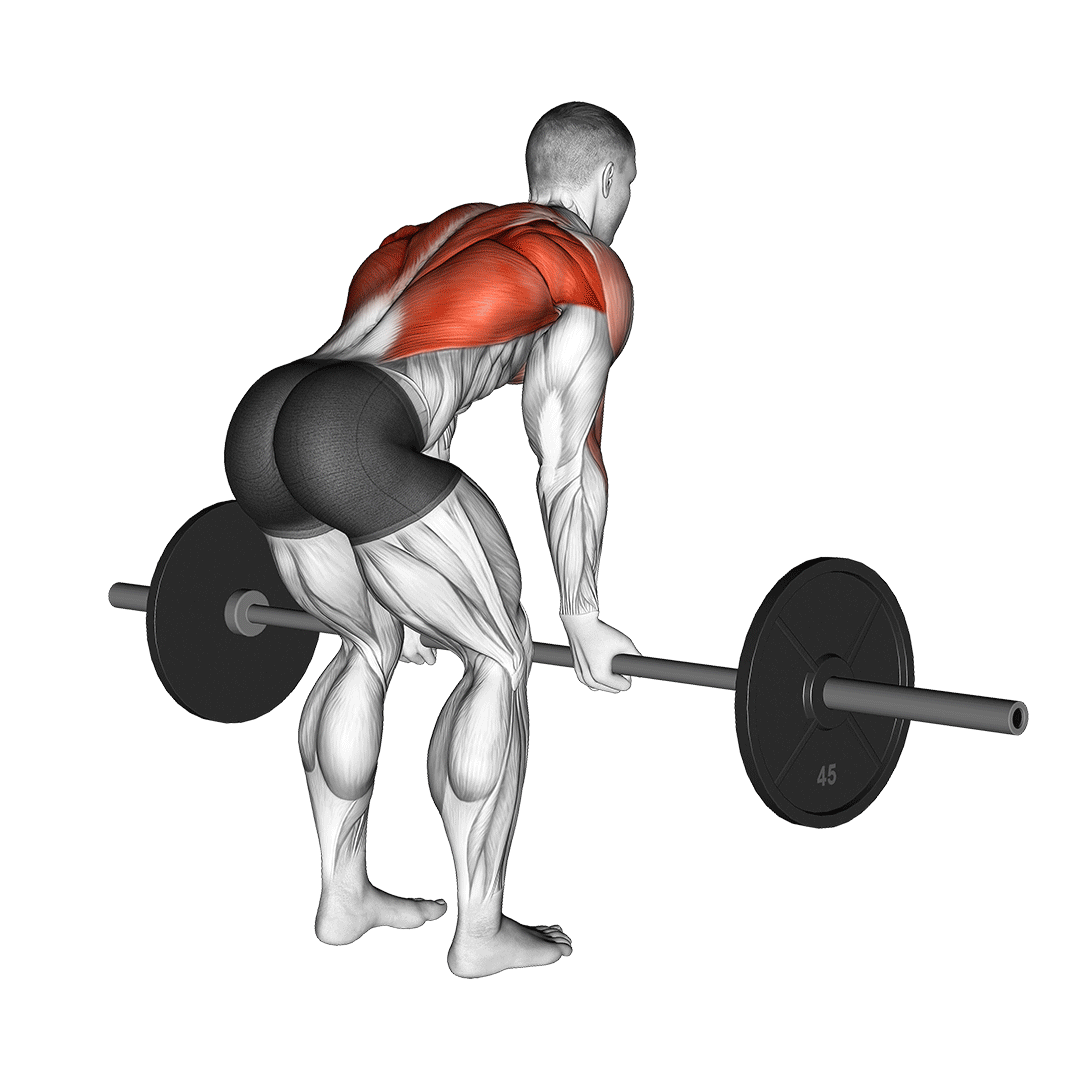Reverse-Grip Bent-Over Row are a highly effective exercise for building upper back strength and stability. This movement targets key muscles including the rhomboids, trapezius, and latissimus dorsi, which are essential for improving posture and facilitating pulling activities. By incorporating this exercise into your routine, you can alleviate tension in your shoulders and neck, especially beneficial for those with sedentary lifestyles.
To achieve the best results, aim to perform Reverse-Grip Bent-Over Row 2 to 3 times a week, allowing for adequate recovery between sessions. This can involve alternating upper and lower body workouts or focusing on different muscle groups daily to maintain balance and prevent fatigue. Always prioritize safety by maintaining a neutral spine and using proper form, as mistakes like rounding your back or using excessive weight can lead to injury.
You’ll need a barbell for this exercise, but if you’re just starting out, consider using lighter dumbbells or resistance bands. Focus on controlled movements, engaging your core, and squeezing your shoulder blades together at the top of each lift to maximize effectiveness. Begin with your feet shoulder-width apart and enjoy the journey to enhanced upper back strength.
How to Do a Barbell Reverse Grip Bent Over Row

Begin by standing with your feet shoulder-width apart, holding a barbell with an underhand (supinated) grip, palms facing you. Hinge at your hips, lowering your torso until it’s nearly parallel to the ground while keeping your back straight and knees slightly bent.
- Engage your core and pull your shoulder blades together.
- With your elbows close to your body, pull the barbell towards your lower ribcage.
- Pause briefly at the top of the movement, squeezing your upper back muscles.
- Lower the barbell in a controlled manner back to the starting position.
- Repeat for the desired number of repetitions.
Inhale as you lower the barbell and exhale as you pull it towards you.
Level Up Your Fitness: Join our 💪 strong community in Fitness Volt Newsletter. Get daily inspiration, expert-backed workouts, nutrition tips, the latest in strength sports, and the support you need to reach your goals. Subscribe for free!
Level Up Your Fitness: Join our 💪 strong community in Fitness Volt Newsletter. Get daily inspiration, expert-backed workouts, nutrition tips, the latest in strength sports, and the support you need to reach your goals. Subscribe for free!
Common Mistakes
- Incorrect Grip: Using an overly wide or narrow grip can strain your wrists and affect your lift. Ensure your grip is shoulder-width apart to maintain proper form.
- Poor Posture: Rounding your back or not keeping a neutral spine can lead to injury. Maintain a straight back and engage your core throughout the exercise to protect your lower back.
- Flared Elbows: Allowing your elbows to flare out excessively reduces upper back activation and increases shoulder strain. Keep your elbows tucked close to your sides during the pull.
- Using Momentum: Jerking or swinging the barbell can compromise the effectiveness of the exercise. Focus on controlled movements for both lifting and lowering the barbell to maximize muscle engagement.
- Neglecting the Pause: Skipping the brief pause at the top of the movement can minimize the muscle recruitment in your upper back. Always pause to fully engage your back muscles before lowering the weight.
Benefits
- Strengthens Upper Back: This exercise targets key muscles in the upper back, including the rhomboids and traps, promoting a strong and stable posture.
- Improves Grip Strength: Using a reverse grip engages the forearm muscles, enhancing grip strength critical for various compound lifts.
- Enhances Spinal Stability: The bent-over position helps strengthen the muscles surrounding the spine, contributing to better overall stability during physical activities.
- Promotes Muscle Hypertrophy: By effectively targeting back muscles through resistance, this exercise supports muscle growth and aesthetics.
- Reduces Risk of Injury: Stronger upper back muscles can alleviate strain on the lower back during daily activities and other lifts, reducing the risk of injury.
Exercise Variations
Alternative Exercises
Safety Precautions
Before beginning the Barbell Reverse Grip Bent Over Row, it is essential to ensure proper form to prevent injuries. Start with a lightweight to master the movement mechanics first before progressing to heavier loads. This foundational strength will allow for better control of the barbell and reduce the risk of strain on the lower back.
It’s crucial to maintain a neutral spine throughout the exercise. Avoid rounding your back by engaging your core and keeping your chest up. If you feel any discomfort in your lower back, reassess your form and adjust your body position, ensuring your torso remains nearly parallel to the ground. If the discomfort persists, consider consulting with a fitness professional to evaluate your technique.
Also, ensure you are using a secure grip on the barbell, and avoid letting your elbows flare out too much during the upward phase of the row. This will help to focus the work on the upper back without compromising shoulder stability. Finally, practice breathing correctly by exhaling during exertion (the pull phase) and inhaling as you lower the weight, as proper breathing can enhance performance and maintain intra-abdominal pressure for added support.
Interested in measuring your progress? Check out our strength standards for Bent Over Row.








